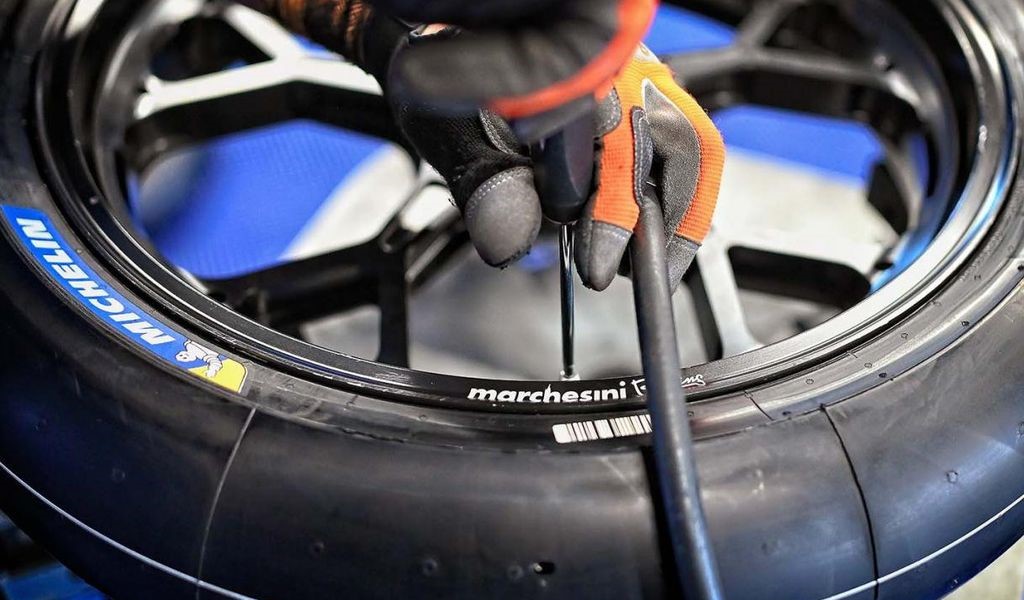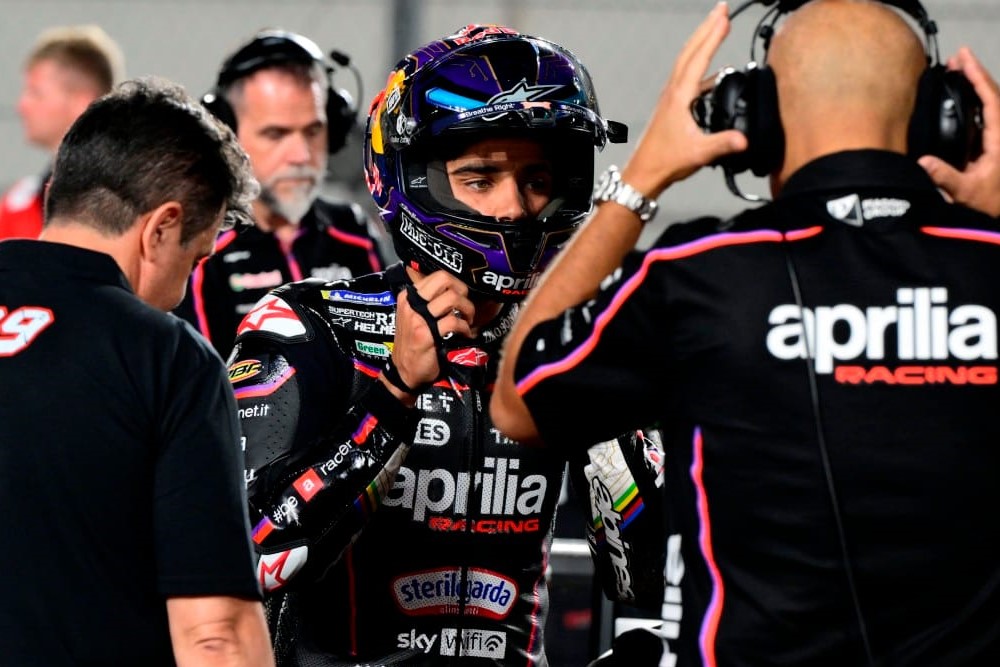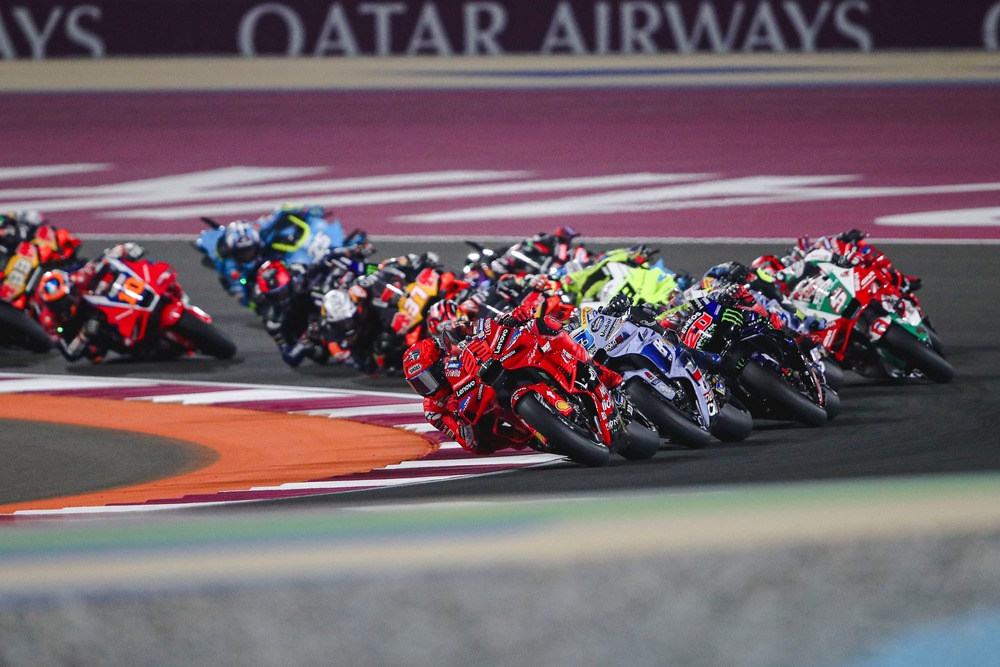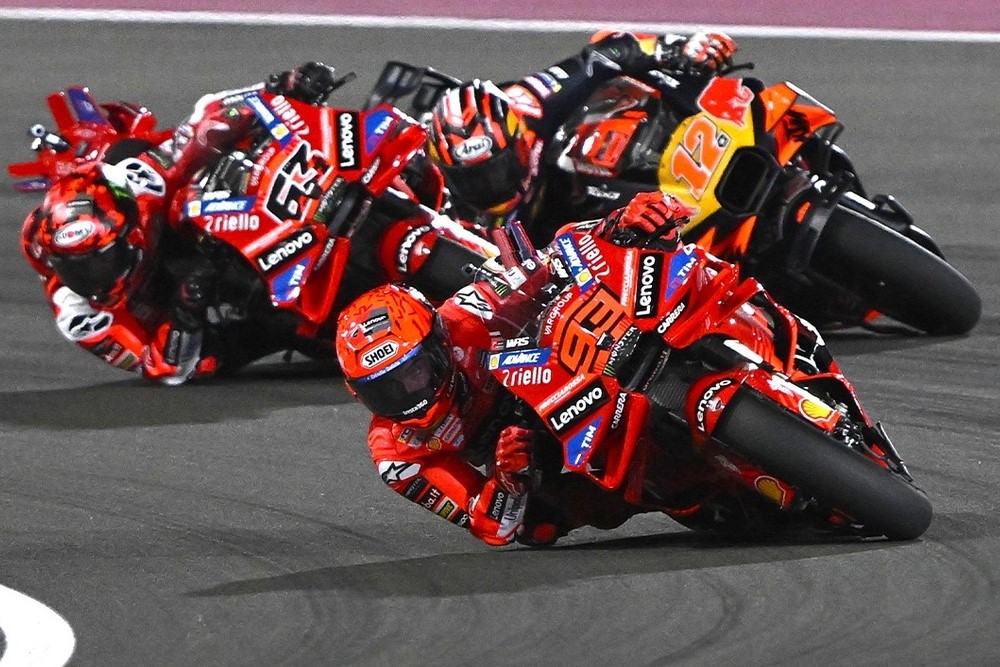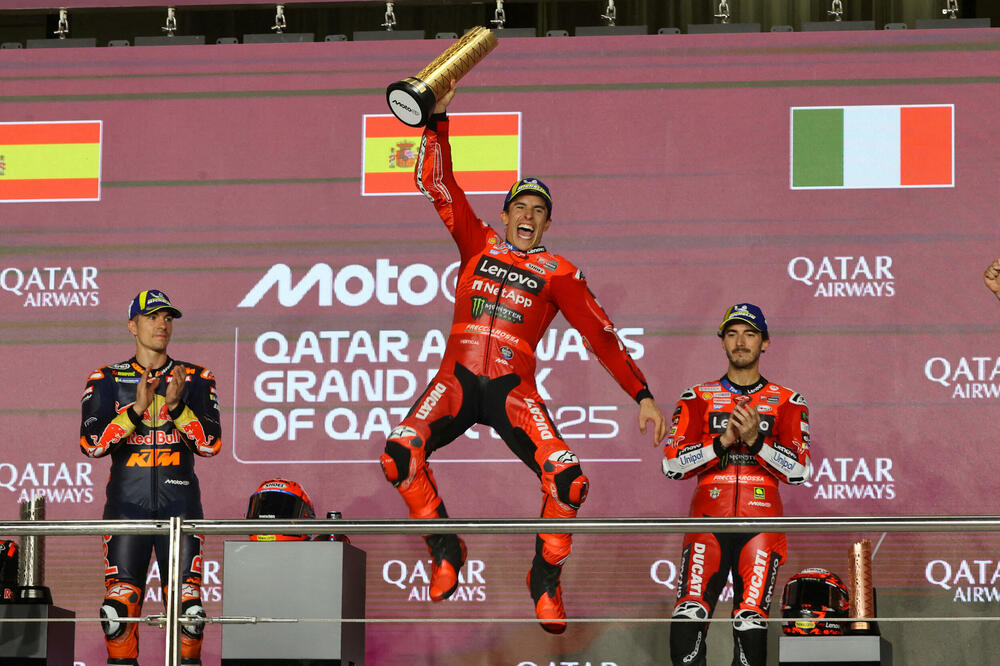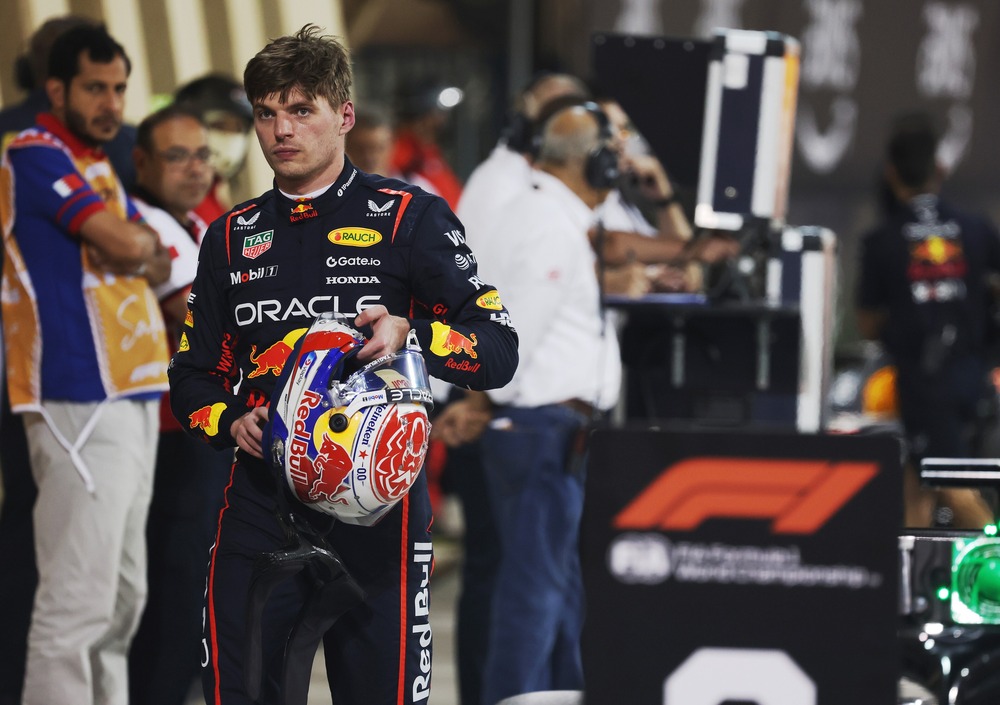According to MotoGP, breaching the tyre pressure rules this season will result in a far heavier post-race time penalty—rather than disqualification.
MotoGP has opted to switch from disqualifications to time penalties for riders who violate the minimum tyre pressure rules starting in 2024.
Penalties for exceeding the 1.88 bar limit set by manufacturer of control tyres Michelin, were initially put into effect halfway through the 2023 season. As a result, several race results changed in the latter stages of the season, most notably the disqualification of Gresini Ducati racer Fabio Di Giannantonio from the podium in last year’s championship showdown race.
This was despite the concerns of the majority of riders on the grid, who felt that considering how much tyre pressure is determined by race conditions, such a penalty would be unreasonable in a situation that was at least partially beyond their control.
Now, riders who receive penalties will at least be able to keep their race results; however, a 16-second penalty in a grand prix (which is reduced to an eight-second penalty in a sprint) remains more than enough to prevent them from finishing at the top of the rankings.
Most importantly, the limit has been lowered: 1.80 bar is now the required front tyre pressure while race-by-race changes are possible.
MotoGP has also increased the number of laps riders must complete in the main race to be over the minimum threshold, from 50% in 2023 to 60% currently while the 30% figure has been retained for the sprints.
Michelin pushed through the controversial minimum pressure rules last year amid the protests of teams and riders in particular.
According to Michelin, some teams were deliberately starting races with low tyre pressure in an effort to manage the pressure increase resulting from trailing another rider, which might result in a potentially dangerous scenario where tyre failure at high speeds is possible.
Although there haven’t been a lot of reported cases of too low a pressure resulting in a dramatic and dangerous failure, riders believed that the risk of running them too high—a lack of front-end feeling making them more prone to crashes—was far greater than that of running them too low.
Since Michelin returned to MotoGP as the control tyre manufacturer in 2016, aerodynamics and ride height devices have significantly changed the series, and it’s possible that its technology hasn’t kept up with the developments.
It has been developing a new front tyre since 2019, and despite efforts to force racers to test it fully during the 2024 preseason with varying degrees of success, it is now quite likely that 2025 will come and go before minimum pressure regulations are no longer an issue in races.

